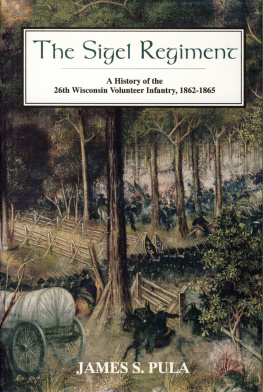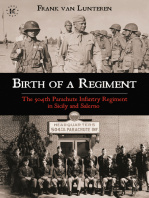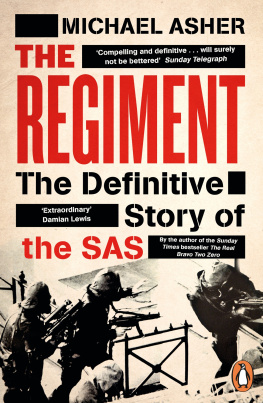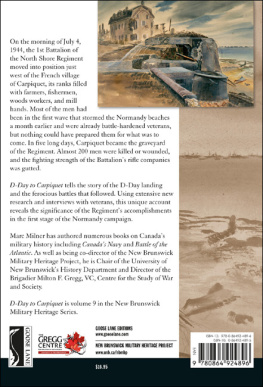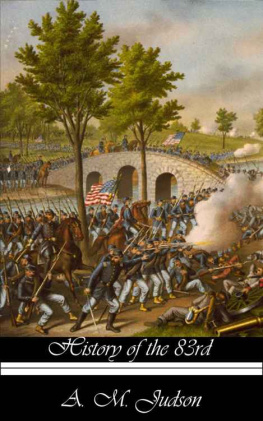James S. Pula - The Sigel Regiment
Here you can read online James S. Pula - The Sigel Regiment full text of the book (entire story) in english for free. Download pdf and epub, get meaning, cover and reviews about this ebook. year: 2014, publisher: Savas Publishing, genre: Politics. Description of the work, (preface) as well as reviews are available. Best literature library LitArk.com created for fans of good reading and offers a wide selection of genres:
Romance novel
Science fiction
Adventure
Detective
Science
History
Home and family
Prose
Art
Politics
Computer
Non-fiction
Religion
Business
Children
Humor
Choose a favorite category and find really read worthwhile books. Enjoy immersion in the world of imagination, feel the emotions of the characters or learn something new for yourself, make an fascinating discovery.
- Book:The Sigel Regiment
- Author:
- Publisher:Savas Publishing
- Genre:
- Year:2014
- Rating:3 / 5
- Favourites:Add to favourites
- Your mark:
- 60
- 1
- 2
- 3
- 4
- 5
The Sigel Regiment: summary, description and annotation
We offer to read an annotation, description, summary or preface (depends on what the author of the book "The Sigel Regiment" wrote himself). If you haven't found the necessary information about the book — write in the comments, we will try to find it.
The Sigel Regiment — read online for free the complete book (whole text) full work
Below is the text of the book, divided by pages. System saving the place of the last page read, allows you to conveniently read the book "The Sigel Regiment" online for free, without having to search again every time where you left off. Put a bookmark, and you can go to the page where you finished reading at any time.
Font size:
Interval:
Bookmark:

Text 2014 James S. Pula
Maps 2014 Savas Publishing Company
All rights reserved. No part of this book may be reproduced or utilized in any form or by any means, electronic or mechanical, including photocopying and recording, or by any information storage and retrieval system, without permission in writing from the publisher.
The Sigel Regiment: A History of the Twenty-Sixth Wisconsin Volunteer Infantry, 1862-1865, by James S. Pula (Originally published by Savas Publishing Company, 1998)
Includes bibliographic references and end notes
Digital First Edition
ISBN-13: 978-1-940669-13-7

Savas Publishing
989 Governor Drive, Suite 102
El Dorado Hills, CA 95762
916-941-6896 (phone)
916-941-6895 (fax)
For My Mother
Whose Patience, Support, and Compassion
Merit a Medal of Honor.


 hile thousands of young men were being killed and maimed along a once-tranquil creek in western Maryland on September 17, 1862, Col. William H. Jacobs' 26th Wisconsin Volunteer Infantry was quietly mustered into service in Milwaukee. The regiment was made up primarily of German immigrants and Americans of German descent. By the war's second autumn few in its newly-formed ranks harbored illusions that the conflict would end quickly. Indeed, the result was still being hotly debated with rifles and artillery across grassy fields and through broken wood lots across the divided nation.
hile thousands of young men were being killed and maimed along a once-tranquil creek in western Maryland on September 17, 1862, Col. William H. Jacobs' 26th Wisconsin Volunteer Infantry was quietly mustered into service in Milwaukee. The regiment was made up primarily of German immigrants and Americans of German descent. By the war's second autumn few in its newly-formed ranks harbored illusions that the conflict would end quickly. Indeed, the result was still being hotly debated with rifles and artillery across grassy fields and through broken wood lots across the divided nation.
The 26th Wisconsin's service began rather fortuitously. It was initially absorbed into the Army of the Potomac and attached to the 2nd Brigade, 3rd Division, 11th Army Corps. Colonel Jacobs was new to the craft of war, having earned his living previously in banking and insurance. The brigade, however, was headed by Col. Wtodzimierz Krzy anowski, a competent officer and Polish refugee with European military experience. Divisional leadership was similarly situated with the bespectacled Carl Schurz in command, a capable Prussian immigrant and former journalist and European revolutionary. As part of the army's Reserve Division, the Wisconsinites missed the opportunity of firing their muskets in anger at the Battle of Fredericksburg in December 1862. Thereafter the 26th's fortunes angled off in a new direction.
anowski, a competent officer and Polish refugee with European military experience. Divisional leadership was similarly situated with the bespectacled Carl Schurz in command, a capable Prussian immigrant and former journalist and European revolutionary. As part of the army's Reserve Division, the Wisconsinites missed the opportunity of firing their muskets in anger at the Battle of Fredericksburg in December 1862. Thereafter the 26th's fortunes angled off in a new direction.
The afternoon of May 2, 1863, found the regiment in Oliver O. Howard's 11th Corps on the army's far right wing in the thickets near a small crossing named Chancellorsville. The neophyte Sigel Regiment, named after German General Franz Sigel, was about to experience the receiving end of one of the most successful surprise attacks in military history. The value of well-drilled stock and solid regimental leadership rose to the fore. Outnumbered, outflanked and caught in a crossfire, the battling Colonel Jacobs refused to fall back before the onslaught until twice ordered to do so by his brigade commander. The cost to the 26th Wisconsin for its lonely and conspicuous stand was 204 men. Similar ill luck two months later ensconced the regiment north of Gettysburg, where the Badger State troops, this time under Lt. Col. Hans Boebel, left another 250 men on the field. By the time the 26th Wisconsin shipped out that fall for service in the Western Theater, hardened combat veterans who had seen the worst war has to offer populated its ranks.
Service in Tennessee with the Army of the Cumberland lessened the regiments' exposure to hard combat only temporarily. With Krzy anowski and Schurz still leading the brigade and division, respectively, Maj. Frederick C. Winkler assumed the reins of regimental leadership and took his Wisconsin troops through the Chattanooga and Knoxville campaigns. The spring of 1864 heralded both a new season of campaigning and a change in organization when the 26th Wisconsin was transferred into the 3rd Brigade, 3rd Division, 20th Corps, with which it served for the balance of the war. Over the following months the Germans distinguished themselves on a number of fields, including Resaca, New Hope Church, Kennesaw Mountain, and Peach Tree Creek. Winkler's thinning regiment achieved special distinction during the latter action when it managed to capture the flag of the 33rd Mississippi Infantry. The March to the Sea and Carolinas Campaign followed, with the 26th seeing action at both Averasboro and Bentonville. By the end of its service some 1,089 men had served in the 26th's ranks; more than 17% were killed or mortally wounded.
anowski and Schurz still leading the brigade and division, respectively, Maj. Frederick C. Winkler assumed the reins of regimental leadership and took his Wisconsin troops through the Chattanooga and Knoxville campaigns. The spring of 1864 heralded both a new season of campaigning and a change in organization when the 26th Wisconsin was transferred into the 3rd Brigade, 3rd Division, 20th Corps, with which it served for the balance of the war. Over the following months the Germans distinguished themselves on a number of fields, including Resaca, New Hope Church, Kennesaw Mountain, and Peach Tree Creek. Winkler's thinning regiment achieved special distinction during the latter action when it managed to capture the flag of the 33rd Mississippi Infantry. The March to the Sea and Carolinas Campaign followed, with the 26th seeing action at both Averasboro and Bentonville. By the end of its service some 1,089 men had served in the 26th's ranks; more than 17% were killed or mortally wounded.
Throughout their remarkable odyssey the men of the 26th Wisconsin remained faithful to both their ethnic roots and their new country. Indeed, their sacrifices for their adopted homeland are inextricably linked forever to the scarred lands stretching from near our nation's capital to beyond the Appalachian Mountainsa pantheon to the fallen. That their story is not better known today is a mystery, for during the Civil War the men of the 26th stood apart and were recognized by their contemporaries as a regiment of distinction.
The colonel of the 2nd Massachusetts Infantry, when referencing the 26th's achievements in the Eastern Theater, hailed it as one of the finest military organizations in the service. Readers of James S. Pula's gracefully written and superbly researched The Sigel Regiment: A History of the Twenty Sixth Wisconsin Volunteer Infantry, 1862-1865, will likewise claim he has penned one of the finest regimental histories published to date.

Theodore P. Savas
Publisher
February 16, 1998
 or any success this work might enjoy, I am indebted to many individuals and institutions who offered their assistance and resources in its preparation. Fred Turk provided extensive copies of his valuable collection of articles from several Wisconsin newspapers, put me in contact with descendants and other researchers, shared his own research, and provided continual encouragement. Russell Scott, developer of an excellent Web Page on the 26th Wisconsin, likewise shared unselfishly his own research and sources, as well as seeking out others to contribute to the effort at recording the experience of the Sigel Regiment.
or any success this work might enjoy, I am indebted to many individuals and institutions who offered their assistance and resources in its preparation. Fred Turk provided extensive copies of his valuable collection of articles from several Wisconsin newspapers, put me in contact with descendants and other researchers, shared his own research, and provided continual encouragement. Russell Scott, developer of an excellent Web Page on the 26th Wisconsin, likewise shared unselfishly his own research and sources, as well as seeking out others to contribute to the effort at recording the experience of the Sigel Regiment.
Particular thanks go to Carmen Gonzalez for her enthusiastic and reliable research assistance, and to Barbara Lunati who translated several German newspaper articles. Others who generously contributed personal papers, photographs, or other information on their ancestors who served with the 26th Wisconsin included Conrad Baetz, Emerson P. Baetz, Thomas Baetz, Patrick Brennan, W. L. Damkoehler, Robert T. Ewens, Donnabelle Gerhardt, Richard H. Haviland, Eliot Held, George H. Kenny, John J. Kuhn, Thomas A. Kuhn, William M. Lamers, John C. Leitzmann, Robert D. Medley, Steven Miske, Dennis R. Moore, John G. Peisen, Florence M. Petterson, James H. Roth, D. JoAnn Schiefelbein, Erv Seeger, Lucy Storch, Michael Telzrow, and Alfred Wickesberg.
Font size:
Interval:
Bookmark:
Similar books «The Sigel Regiment»
Look at similar books to The Sigel Regiment. We have selected literature similar in name and meaning in the hope of providing readers with more options to find new, interesting, not yet read works.
Discussion, reviews of the book The Sigel Regiment and just readers' own opinions. Leave your comments, write what you think about the work, its meaning or the main characters. Specify what exactly you liked and what you didn't like, and why you think so.

